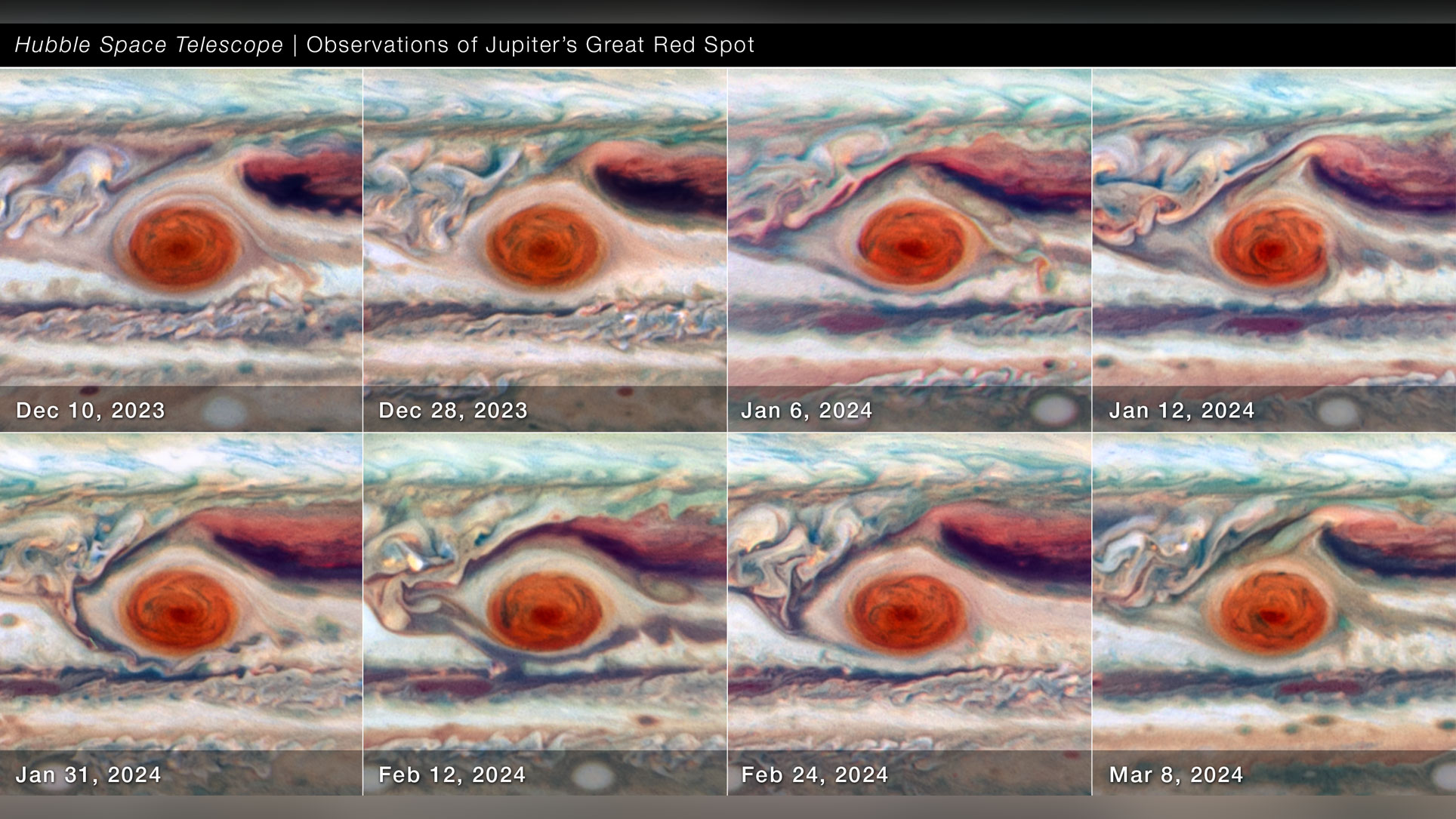
Astronomers have been observing Jupiter’s legendary Great Red Spot (GRS), "an anticyclone large enough to swallow Earth", for the last 150 years. Yet despite the longevity of the observations of this long-lived enormous storm system, there are always new surprises.
The Great Red Spot is an anticyclone, "a long lasting area of high pressure on Jupiter creating a persistent storm," according to Space.com. It is the largest storm in our solar system, and at 10,159 miles / 16,350km wide, it’s about 1.3 times the width of the Earth (7,918 miles / 12,740 km).
NASA’s astronomers recently observed something interesting about the Great Red Spot using the 34-year-old Hubble Space Telescope. The data collected between December 2023 and March 2024 revealed that the GRS might not be as stable as previously thought.
The observations show the GRS "jiggling like a bowl of gelatin," says NASA. The combined images knotted together create a time-lapse movie, showing the area pulsing like "a giant stress ball".
ABOVE: Watch video Jupiter's Great Red Spot is Shaking
Amy Simon of NASA's Goddard Space Flight Center in Greenbelt, Maryland, lead author of the science paper published in The Planetary Science Journal said:
"While we knew its motion varies slightly in its longitude, we didn't expect to see the size oscillate. As far as we know, it's not been identified before.
"This is really the first time we've had the proper imaging cadence of the GRS. With Hubble's high resolution we can say that the GRS is definitively squeezing in and out at the same time as it moves faster and slower. That was very unexpected, and at present there are no hydrodynamic explanations."
Understanding the inner workings of the largest storms in the solar systems puts the theory of hurricanes on Earth, like the recent Helene and Milton, into a broader cosmic context, "which might be applied to better understanding the meteorology on planets around other stars," says NASA.
Simon’s team used the reliable old Hubble to zoom in on the GRS looking for changes in size, shape and color.
"This includes ultraviolet-light observations showing that the distinct core of the storm gets brightest when the GRS is at its largest size in its oscillation cycle," according to NASA. "This indicates less haze absorption in the upper atmosphere."
The team predict the GRS will keep shrinking as they observe it through the Hubble, until it takes on a stable, less-elongated shape. They believe it will also stabilize in size but, for now, the Hubble has only observed it for one oscillation cycle.
Take a look at our guides to the best telescopes for astrophotography , the best telescopes for beginners , and the best telescopes for kids .







